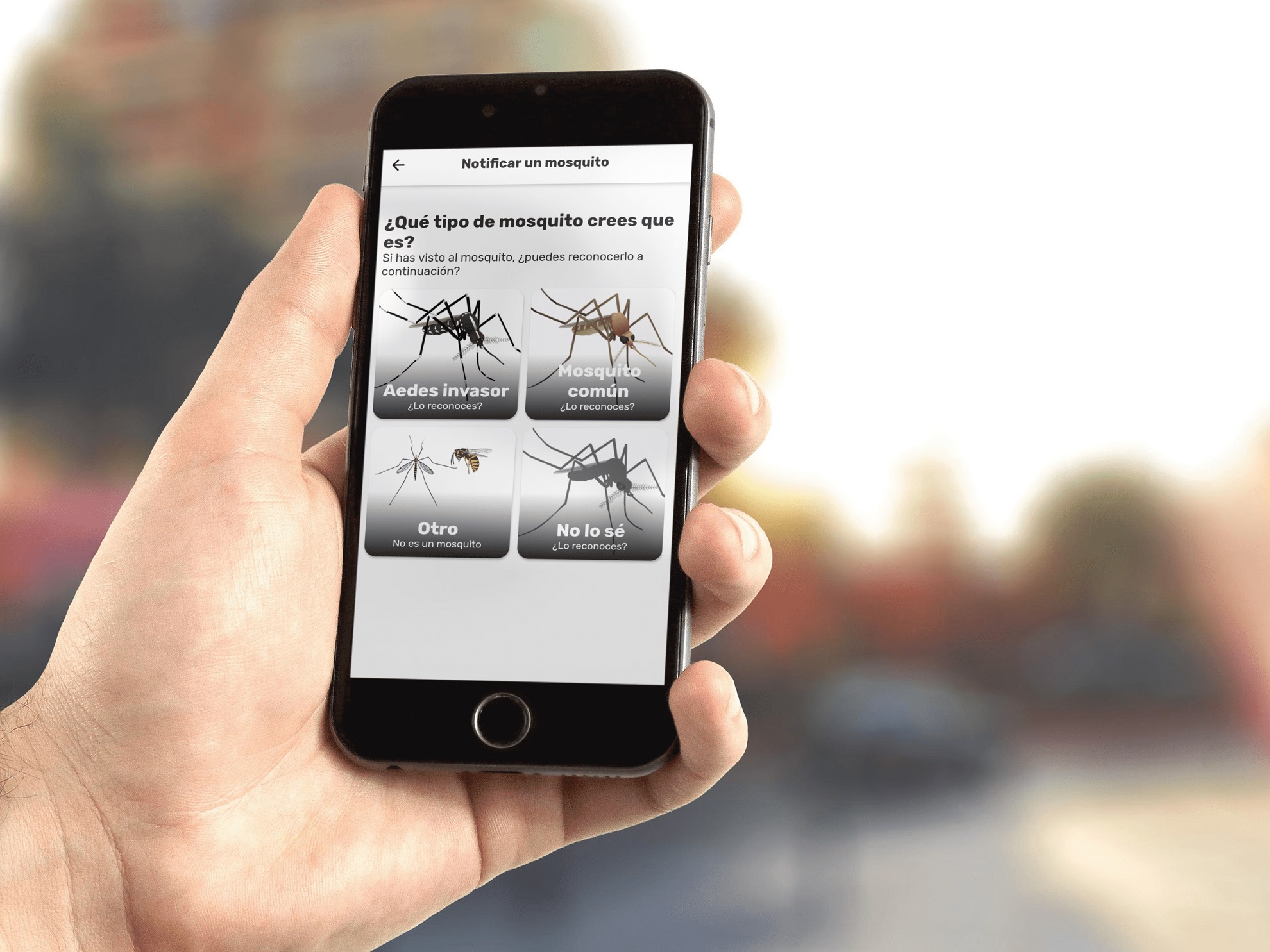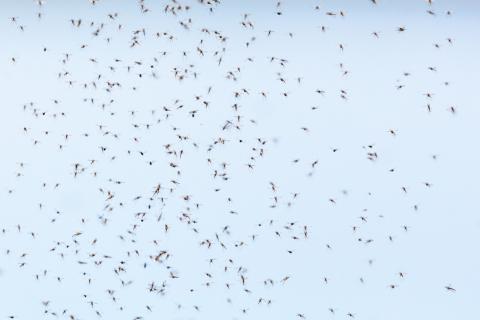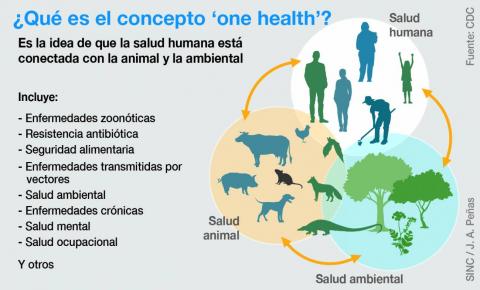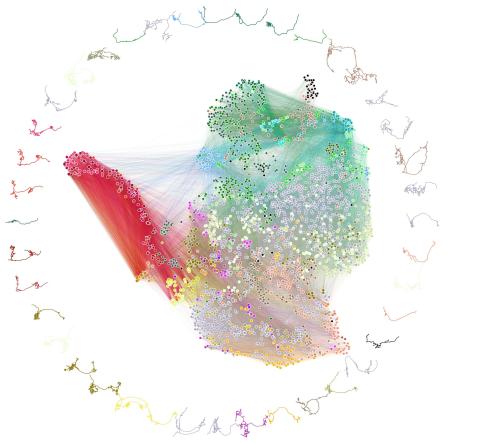Citizen science is a way of doing science in which the general public is involved in one or more of the stages of the research process. There are different definitions of the term, but if we stick to the one provided by the European Citizen Science White Paper, it refers to the participation of the general public in scientific research activities when citizens actively contribute to science, whether be it with your intellectual effort or with the surrounding knowledge or with your tools and resources.
Although we could say that citizen science, or the participation of citizens in science, has always been present in one way or another, it was not until a few years ago that this way of doing science has spread throughout the planet and has gained popularity. magnitude never seen until recently, especially also due to the great ease of access to new technologies and digital tools. Thus, we currently find ourselves with a large number of initiatives, many of them successful and with a great path and potential.
The new law of the university system dedicates an entire article to the promotion of citizen science and open science
So much so that today it is even difficult to see scientific policies or strategies that do not mention citizen science or citizen participation in science. For example, the new law of the university system dedicates an entire article to the promotion of citizen science and open science and in its preamble, it establishes: "we need an Open Science, which assumes this knowledge as a common, accessible and non-commodified good, a Citizen Science in which knowledge is built in a shared way, assuming the complexity of the investigation in a collective way”. And this is not an isolated case, since similar references can also be found, for example, in the reform of the science law. But could it be that all this is just a passing fad?
World Mosquito Day, which is celebrated every August 20, is a good time to land on this question and ask ourselves if citizen science is or can really be an effective tool for the study and monitoring of mosquitoes.
Mosquito Alert: insects at the click of a button
In Spain we have an initiative with mosquito vectors of diseases: the Mosquito Alert project, coordinated, among other institutions, by the CSIC, the UPF and the CREAF. This initiative, which aims, through citizen science, to study and help control invasive mosquitoes and disease vectors, was born as a small pilot project in 2013 in the province of Girona and is currently an international initiative, mainly with participation and activity in Spain, Holland and Italy.
Mosquitoes are small insects that are easily recognizable by the public. Surely they do not arouse great passions, like other groups of animals, but they are part of our daily life, since they bother us and sting us summer after summer. With the entry of the tiger mosquito in Spain, and with the recent outbreaks of the West Nile virus, these insects have also been gaining bad press for being potential vectors of diseases.
The problems associated with disease-carrying mosquitoes, such as the tiger mosquito in Spain, cannot be addressed only with the involvement of scientific personnel and public administrations
It is because of their small size and relative ease in recognizing them, because of their relationship with public health, and because of the difficulty in tracking them throughout the territory, that make them interesting target species for citizen science. Thus, and thanks to new technologies, the internet or mobile phone applications, anyone can currently report a finding of these species or their interactions with us through bites, and make available a large collective database, both for the general public and for research and management personnel.
In this case, citizen science not only allows us to reach more places and further, but also enables us to develop tools to spread the word: the problems associated with mosquitoes that are vectors of diseases and invaders, such as the tiger mosquito. In Spain, it cannot be dealt with only with the involvement of scientific personnel and public administrations. To control its dispersion, and minimize its presence in order to reduce the potential risk of disease transmission, the participation of the entire society is necessary.
We need data, management in public spaces, but also citizens who are aware of the problem, who apply preventive and corrective measures in their homes, patios, gardens and neighboring communities: individual protection (mosquito nets, repellents, etc.) and active prevention (remove and control small containers with stagnant water, mainly).
Open databases and collaboration as a driver of innovation
It is true that citizen science initiatives can be expensive and complex to implement and maintain, but they also bring numerous benefits. In the case of mosquitoes, it had already been shown, even before the appearance of citizen science, that several detections of these species were produced by citizen alerts: a phone call from a concerned neighbor or an email to a council with the mysterious photo of a mosquito that bites in hours never seen before. But it is with the standardization of these alerts through citizen science that we can begin to obtain large databases, automated and in near real time, or centralized alerts.
Although, in no case, citizen science replaces "non-citizen" research, initiatives such as Mosquito Alert have made it possible to centralize and unite collaboration beyond citizens, and generate new fields of research: currently, Mosquito Alert brings together more than 60 people who are experts in entomology who help validate citizen data and collaborate in the detection and monitoring of new alerts, participating in what we could call a new branch of entomology, digital entomology. At the same time, public health managers and/or companies can use the data generated for their monitoring and control actions, especially in urban areas.
The large number of citizen photographs of mosquitoes is allowing the development of methodologies based on Artificial Intelligence that allow improving the validation of the data
The large databases generated are making it possible to study aspects such as the phenology of these species (that is, their seasonality or possible relationship with the climate) or even to develop predictive models. And the large number of citizen photographs of mosquitoes obtained is making it possible to develop methodologies and algorithms based on Artificial Intelligence that improve the validation of citizen data and bring us ever closer to a validation that is as reliable as possible in almost real time. All of this is an exercise in innovation that can prepare us for future disease outbreaks.
The last of these challenges has been the formal inclusion —beyond the science policies that we mentioned at the beginning— in strategies and sectoral public policy. Thus, this summer, the Mosquito Alert initiative has received the support of the Ministry of Health, and citizen science has been included in the National Plan for the Prevention, Surveillance and Control of Vector-borne Diseases of April 2023. As a result of this support , a joint participatory and prevention campaign has been promoted for the first time in Spain, with the aim of generating synergies and developing shared tools between all levels of the administration, citizens and the scientific community.
The challenge now remains to demonstrate that this type of project can be maintained in the long term and that the investment made in its conception, creation, testing and start-up does not come to nothing. Although it is common to consider that the cost of citizen science is relatively low, at least compared to a comparable cost without citizen participation, they can be complex initiatives that require highly transversal profiles and large doses of technology, innovation, creativity and, why No, perseverance. We can say that they are open innovation experiments and as such, subject to great challenges and great possible achievements. Do you join the experiment?





